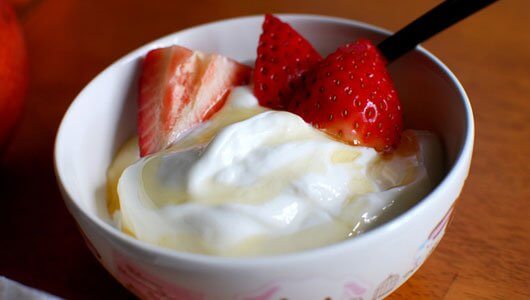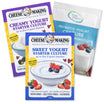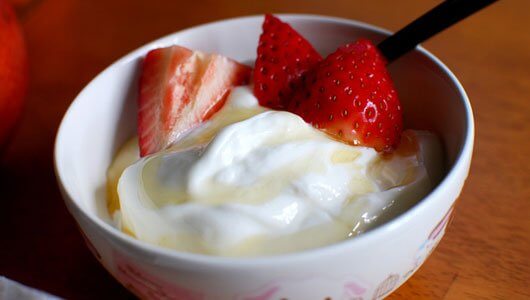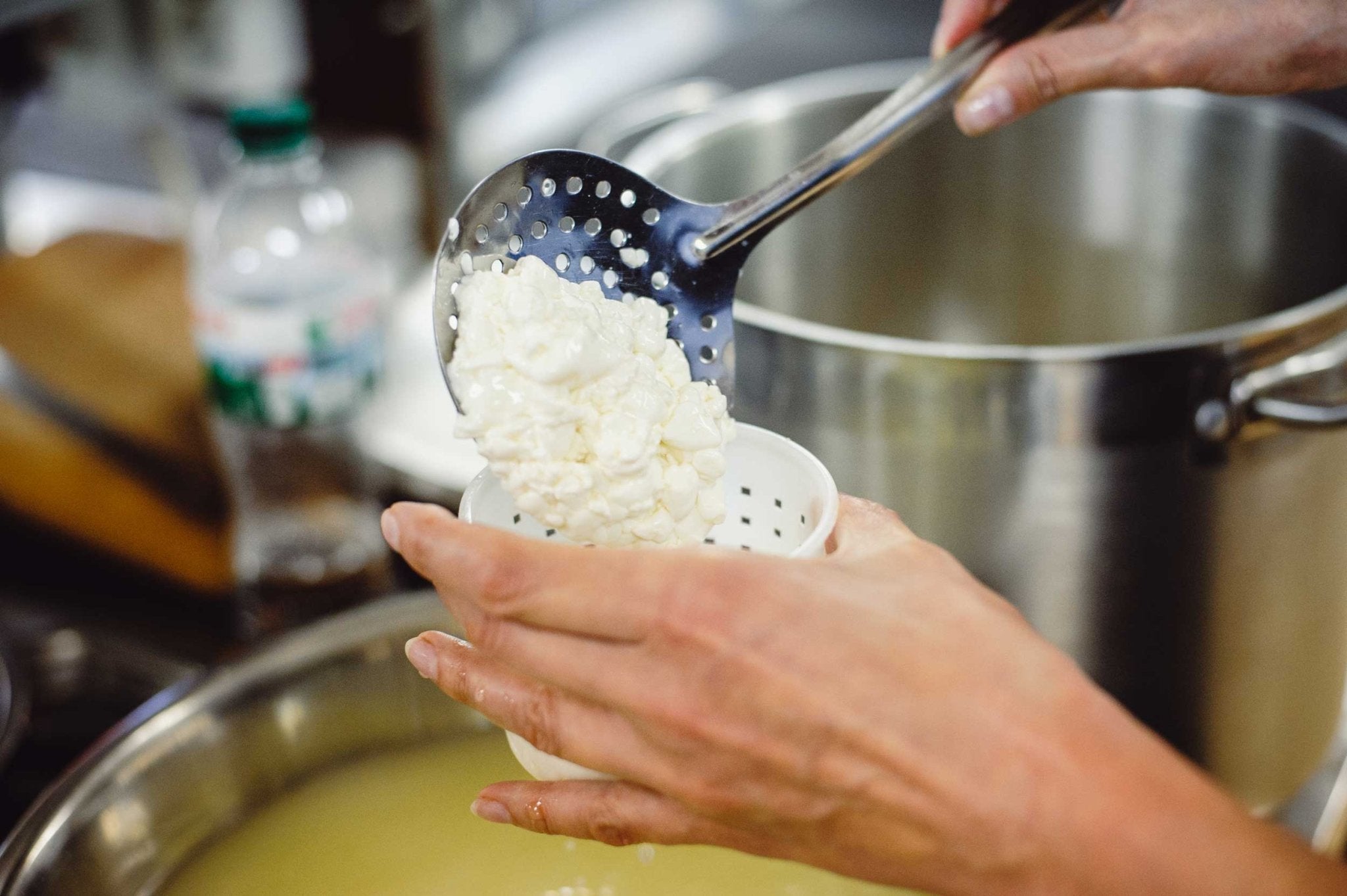
Quark Cheese Making Recipe
-
Yield
2 Pounds
-
Aging Time
None
-
Skill Level
Beginner
-
Author
Jim Wallace

Ingredients
Total price for selected items: Total price:
Instructions
Culture Options for Making Quark
To show how diverse home cheese making can be, I am going to lay out a range of cultures you can use, depending on the milk you are using and what you really prefer to make. For Quark, you will be best off using one of our more complex mesophilic cultures which contain the following bacteria:
- s.lactis for acid production
- s.cremoris for acid production
- s.lactis diacetylactis for a buttery flavor addition
For use with a store bought milk that has been pasteurized at higher temps and stored cold, or if you find that your curd is too weak, we suggest using our C20G Chevre, or C20 Fromage Blanc, cultures which contains their own powdered rennet. If you would like a culture with a little less rennet included, for a less firm curd, use our C33 Creme Fraiche.
Our German customers have told us that when they are making their quark they use the C20 (Fromage Blanc) with skimmed milk and to them it is quite authentic to the cheese they remember.
If you would like a more open texture, the following cultures include all of the above strains plus the culture m.s.cremoris, that produces a small amount of CO2 . These 2 cultures contain no rennet but you can add your own using 1-3 drops per gallon of our liquid rennet (the tablet rennet can not be used here)
These are especially good for very fresh farm milk or one pasteurized at a lower temperature. If you would like a very soft creamy Quark, use our C21 Buttermilk culture, which has no added rennet, or our C11 Flora Danica which comes in a much larger pack and can be used at the rate of 1/8tsp per gallon of milk.
You could also use our C101 Mesophilic culture but it is a much less complex culture and would not have the flavor/texture benefit of the cultures listed above and only 1/2 pack should be used for the 1 gallon of milk.
-

Acidify & Heat Milk
Begin by heating the milk to 86F (30C). You do this by placing the milk in a pot on the stove. Make sure you heat the milk slowly and stir it well as it heats.
Once the milk is at 86F, the culture can be added. Sprinkle the powder over the surface of the milk to prevent it from caking and sinking in clumps and then allow about 2 minutes for the powder to re-hydrate before stirring it in.
-


Let Milk Set
Add rennet if needed: Many of the suggested culture packs already contain powdered rennet but if using C21 Buttermilk Culture or C11 Flora Danica, add 1-3 drops of single strength liquid rennet, if you like a firmer Quark. See the details on adding rennet in the culture options above.
The milk now needs to sit covered and quiet for 12 to 24 hours while the culture works to produce acid and coagulation of the curd. The temperature should be allowed to slowly drop to 68-71F during this time. The actual amount of time may be largely dependent on your milk you use and how firm you want your final Quark. Again, options that allow you to make the cheese that suits your taste.
You can tell when the curd is right by:
- Watching for a thin layer of whey to form on the surface and the curd pulling away from the sides.
- Inserting the knife blade flat at a 45 degree angle into the curd and lifting up gently, watching for that nice clean break as shown in photo below.
- Tasting the curd that has formed for the right amount of acid.
This is allows you to make your Quark just the way you like it. Take good notes on times and temp the first few times you do it and if the coagulation or acid is slow in developing then then keep the batch a bit warmer and/or allow it to sit longer.
For a sweeter Quark: lower temperature and shorter time will be your control. For a less firm Quark: use less rennet. As in all good things, the best Quark for you is what you like.
-




Transfer & Drain Curds
The dry curds can now be transferred to a colander lined with butter muslin. The 4 corners of the cloth are brought together and tied off to form a draining bag. This can be opened at intervals during the draining and the curds scraped from the cloth to the center for better draining.
This draining bag can now be suspended from a hook or even from your faucet to drain. Make sure you have a pot or bowl to capture the draining whey which can be used for other use in baking or cooking.
It should be allowed to drain for 12-24 hours in a place where the temperature is at 68-72F. The actual draining time will determine the dryness of your final cheese. Again, the choice is yours and this is maybe the biggest reason to make your own cheese at home.
When you open the draining bag finally, your Quark will have lost much of its whey and look much like a drained yogurt or even a moist bread dough if you have opted for a drier cheese from longer draining.
-



Finished Cheese
At this point you can add a bit of cream to the finished cheese and mix in for a richer Quark, this is nice for desserts. You can even whip the cheese to form a smoother texture.
The Quark is now ready to enjoy or to be refrigerated for up to 7-10 days.
The additional photos above are the second batch I made into a yummy parfait style dessert with layers of Quark, and honey sweetened blueberries and raspberries.
Common Question About Quark
- Is strained yogurt is the same as Quark? No it's not, Yogurt cheese does not taste like Quark. Quark contains the Lactococcus lactis bacteria (works at lower temperature), while yogurt contains Lactococcus thermophilus (works at a higher temperature). Quark is usually much sweeter than a Greek style drained yogurt
- Can we make Quark using rennet on the stove in a fraction of the time? Yes, this is how it is being made by the dairy industry in Germany. 4 hours and done! The problem is that you are missing the beneficial buttermilk bacteria. Newer producers now add buttermilk cultures to it, due to public demand for live cultures. Making it the old-fashioned way with live cultures is also better for your health.
- Can I make Quark on the stove top or in the oven using higher temperatures over several hours? Yes, you can, but it is not recommended. Too much heat will cook the protein and kill the beneficial bacteria.
Quark Cheese Making Recipe Info
Why You'll Love Quark
What Is Quark Anyway?
Delicious Ways to Use Quark
How to Make Quark at Home
Cheese Making Supplies
Related Products
You May Also Like


































